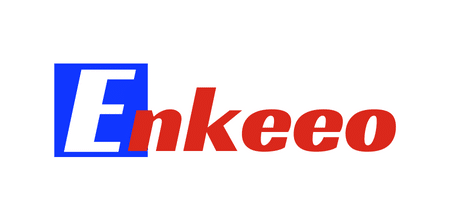What Are the Architectural Innovations for Enhancing Natural Light in Office Buildings?

Natural light in office spaces hasn’t always been a priority. For years, office buildings have been designed with an emphasis on function over form, often resulting in spaces that while practical, lack a connection with the natural world. However, modern architecture has seen a shift towards more sustainable and human-centric design, with a particular focus on daylighting—the practice of placing windows, other openings, and reflective surfaces so that sunlight can provide effective internal lighting. This article delves into various innovative architectural designs and strategies that are harnessing the power of natural light in office buildings.
The Role of Windows and Glass in Daylighting
The humble window, the traditional gateway for natural light, has been significantly enhanced through modern design and technology. We’re now seeing windows being used in more innovative and strategic ways to maximize natural light in office spaces.
A lire également : How to Align Real Estate Development with UK’s National Biodiversity Strategy and Action Plans?
Office building design has traditionally involved limited use of windows, often due to concerns about heat loss, privacy, and sun glare. However, through advances in window and glass technology, these concerns are becoming a thing of the past. Energy efficient windows, capable of reducing heat loss while allowing maximum light, are now commonplace.
Furthermore, glass technology advancements have also led to the creation of "smart glass". This type of glass can be programmed to change transparency at different times of the day to control light penetration, thereby addressing the issue of sun glare.
En parallèle : How to Align Real Estate Development with UK’s National Biodiversity Strategy and Action Plans?
Windows are also being positioned more strategically in modern office buildings. Rather than being limited to external walls, windows are being incorporated into internal walls and partitions to allow light to flow through multiple spaces.
Skylights: A Window to the Sky
While windows play a significant role in daylighting, there’s another design element that architects are increasingly exploiting to maximize natural light—skylights. Skylights provide a direct link to the sky, promising an abundance of light even in spaces that are far from external walls.
The strategic placement of skylights can dramatically increase the amount of natural light in office spaces. They can serve as the primary source of light for central spaces that are typically the most challenging to illuminate naturally.
Skylights are also evolving technologically. Innovations such as solar-tracking skylights, which follow the sun’s movement to maximize natural light capture, are becoming more popular in office building designs.
The Power of Reflective Surfaces
While direct sunlight is a powerful source of light, it isn’t the only way to illuminate an office space. Reflective surfaces can also play a crucial role in spreading light throughout an office.
Material selection plays a pivotal role in this aspect of design. Materials with high light reflectance values, like white paint, certain types of metal, and glass, can be strategically used to bounce light deeper into spaces. This can prove particularly beneficial in larger office buildings where it can be challenging to ensure natural light reaches all areas.
Flooring choices can also impact the amount of light in a space. Reflective flooring can contribute to indirect lighting, reducing the need for artificial light.
The Impact of Building Orientation
The orientation of a building can significantly impact the amount of sunlight it receives. By considering the path of the sun, architects can design buildings that maximize exposure to natural light throughout the day.
In the northern hemisphere, south-facing spaces will receive the most sunlight during the day. Therefore, positioning workspaces on the southern side of a building and service areas to the north can be an effective strategy for maximizing natural light.
However, it’s not just about maximizing sunlight – it’s also about controlling it. Too much direct sunlight can cause overheating and glare. Therefore, architects also need to consider the use of shading devices, like overhangs and pergolas, to control the amount of sunlight entering the space.
The Future of Daylighting
The future of daylighting in office spaces is bright, with new technologies and design strategies continually emerging. The incorporation of natural light in office buildings not only promotes a more pleasant working environment but also reduces reliance on artificial lighting, thus saving energy and reducing carbon emissions.
Smart technologies like automated shading systems and light sensors are becoming more prevalent. These systems can adjust the amount of sunlight entering a space based on the time of day, the season, and even the weather. This allows for a more consistent level of natural light and eliminates issues with glare and overheating.
Another promising innovation is the use of light shelves—horizontal surfaces that reflect daylight deep into a building. Positioned above eye-level, these devices can bounce daylight onto the ceiling, distributing natural light more evenly throughout the space.
The trend towards greener, more sustainable buildings is also likely to drive further innovations in daylighting. As the advantages of natural light become increasingly acknowledged, office buildings of the future will likely continue to evolve to allow for even greater amounts of natural daylighting.
Daylighting Systems: Evolving Towards More Dynamic Solutions
Daylighting has seen many evolutions, from windows and skylights to reflective surfaces and building orientation. However, modern architecture is taking strides towards a more dynamic approach with the introduction of daylighting systems. These systems incorporate several components and technologies to optimize natural light in office spaces while minimizing issues like heat gain, glare, and fluctuating light levels.
Daylighting systems typically include a combination of windows, skylights, light shelves, and shading devices. But what gives these systems an edge is their integration with lighting controls, sensors, and automated features. These elements help to balance natural light with artificial light, ensuring a consistent and comfortable lighting environment regardless of the time of day, season, or weather conditions.
One such technology that is gaining prominence in daylighting systems is electric lighting controls. These controls respond to the amount of natural light in a space and adjust the level of artificial light accordingly, saving energy and reducing the reliance on electric lighting. For instance, on a bright sunny day, the system would automatically dim or turn off artificial lights, thus taking advantage of the abundant natural light. Similarly, on a cloudy day or during evening hours, the system would compensate by increasing the level of artificial lighting.
Lighting sensors and automated shading devices further enhance these systems. Sensors can detect when a space is unoccupied and turn off lights, contributing to energy savings. Automated shading devices, on the other hand, adjust based on the sun’s position to control heat gain and prevent glare, all while ensuring an optimum level of natural light.
By integrating these diverse elements, daylighting systems provide a dynamic solution that adapts to changing conditions, providing optimal natural lighting while maximizing energy efficiency.
In Conclusion: Embracing a Brighter, More Sustainable Future
The shift in architectural design towards enhancing natural light in office buildings signifies a broader movement towards sustainability and human-centric design. The benefits natural light brings to the workplace, from boosting productivity and well-being to reducing energy consumption, make it a critical component in modern office design.
By harnessing the power of natural light, architectural innovations like windows and skylights, reflective surfaces, optimal building orientation, and dynamic daylighting systems are transforming how we light up our office spaces. These solutions not only create more pleasant and healthier working environments but also contribute to the broader goal of reducing carbon emissions and creating greener buildings.
The future of daylighting in office buildings is not just about maximizing the amount of natural light. It’s about creating a balance and adaptability in lighting design. As the technologies continue to evolve and become more sophisticated, so too will the ways in which we harness and control natural light.
From smart glass that changes transparency based on the time of day, to lighting controls that balance natural and artificial light, the innovations in daylighting are diverse and exciting. The growing focus on sustainability and human-centric design in architecture promises further advancements in this field.
Ultimately, the move towards enhancing natural light in office buildings is not just a trend. It’s a fundamental shift towards a brighter, more sustainable future that values both human well-being and environmental responsibility.
